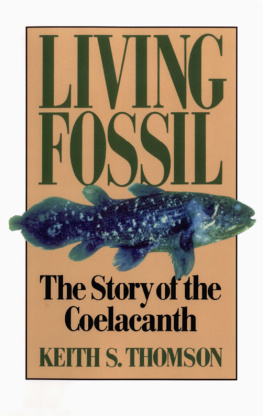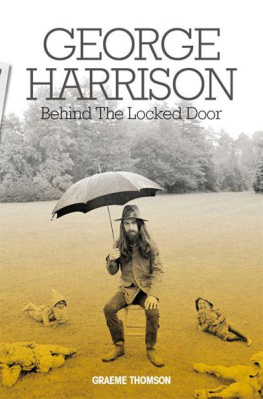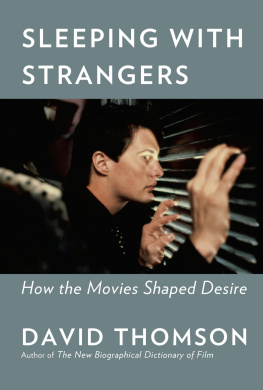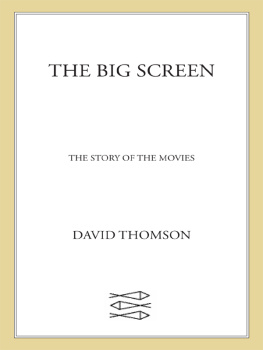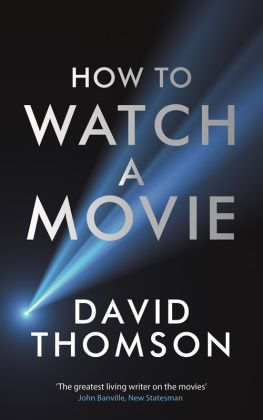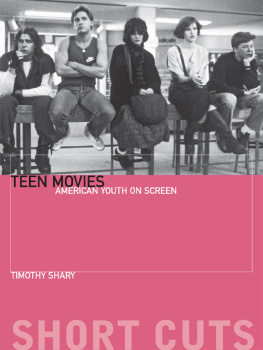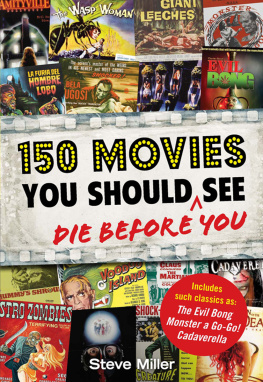You have to seeJames Stewart and Margaret Sullavan in Ernst Lubitschs The Shop Around the Corner
FOR DAVID W. PACKARD
Judy Garland in Meet Me in St. Louis
Prologue: Let There Be Light
As I was writing this book, and trying to discover what it was about, I found myself muttering to friends, Well, its a history, I suppose. Oh, a history of the whole thing, they said, how nice. But when we pursued the matter, I tried to explain that the whole thing had to be more than Mlis to Melancholia its Muybridge to Facebook, I said before I had entirely settled on that. I always knew it was a book about screens. Whereas the patrons of movie houses had once gazed at the imagery, the moving photography, the story, it was clearer now that we citizens are living with screens even if we dont go to the movies or really concentrate on the screens. The screens then and now are alike, but they were big once, as large as buildings, and now they may be thumbnail sizeyet they are vast in their ubiquity and their constant use. They make a taunting offer of reality, but I wonder if that isnt a way of keeping us out of it.
This is a time for such a history, in which proper celebration is mixed with skepticism and some regret. Film as a commodity is going out of use; that thrilling name Kodak is passing away (it turns out Kodak was only a moment); and the 2012 revival of Abel Gances Napolon , as full as it could be at five and a half hours, may have been the last chance to see that passionate work as film. Moviegoing does not quite exist anymore as a consuming public preoccupation, no matter that the media and the Academy cling to the old notion. The technologies are carrying us forward so rapidly we become giddy with changethe motion smothers emotion.
I have sometimes wondered at the drastic changes that could occur between the writing and the publication of this booknot least at the continuing advance in the habit of reading a book on a screen. (Why not, if thats where books are written?) I was on a subway train the other day, going from San Francisco to Oakland, and three quarters of the people in the crowded car were focused intently on tiny screens (parts of their phones, in most cases) or dreaming to the sounds coming through their earpieces. There was no talk and little noticing, and this strikes a movie fan as disconcerting in that the movies always seemed to be about looking and the quality of things seenas mood, narrative, or even beautyand about the possibility of seeing inner meanings. So this book will exult over great films (and urge you to see them), and it will worry, too, over the ways in which the multiplicity of screens now are not just metaphors for our isolation and feelings of futility in dealing with the world but a fuel for that helplessness. (Once upon a time, we defined screen as a place where things were shown. But now an older meaning has crept back: a screen can be a masking device behind which things and humans may hide.) In the earliest days, the primitive movie shows seemed to be life in our lap, but now the many lap devices often whisper to us that we are not to bother with life. Isnt it beyond salvation? Isnt it, as the movies have always hinted, just a show?

From the moment Eadweard Muybridge picked up a camera (in the 1860s) to the occasion of Georges Mlis setting his aside (as the Great War began), the world went mad with progress. It was a time of profound novelties: electricity; the telephone; automobiles; powered aircraft; psychoanalysis; women seeking the vote and so much more; immigration to America on an unprecedented scale; a new kind of city, or metropolis; the realization that the populace might be a mass, or a force, and a way of knowing strangers by their images. So many changes, so many needs, with photography and moving film striving to mimic the commotion. But moving film was a mixture of science and magic: when the film strip moved, the still world came to life. Or something so close to it as to be heartbreaking: it became lifelike.
In E. L. Doctorows novel Ragtime , the family meet the Baron Ashkenazy, who has become an entrepreneur in the new craze of movies. This is the early 1900s. He tells them about the wonder of what he is selling:
In the movie films, he said, we only look at what is there already. Life shines on the shadow screen, as from the darkness of ones mind. It is a big business. People want to know what is happening to them. For a few pennies they sit and see their selves in movement, running, racing in motorcars, fighting and, forgive me, embracing one another. This is most important today, in this country, where everybody is so new. There is such a need to understand.
The possibility that in looking to see we might understand is the hope and the excitement in this book. It may be its tragedy, too.

Eadweard Muybridge was one of those men whose work was needed to measure out the changes in what people were seeing and thinking. He was a still photographer, and arguably a troubled and violent person, but the stills were not enough for him. He guessed that they could be restored to the progress or the continuum from which they had been takenmotion, life, timeand that that past could be made present and lifelike.
In advance of any official identification of cinematography and projection, audience or the show, he had divined key elements of what moving film, motion pictures, or movie would do. He had made an illustrated analysis of our recent past that indicated a future medium, but he hardly knew whether to think of it as science or poetry. We are still grappling with the question of whether this thing is story or its own relentless technology.
He was foreign or he was English. He came to America first in 1855 in a spirit of hopeful enterprise. He saw the prospect of men and women walking the beautiful land, and he would be of the generation of photographers who helped colonize that place in our imagination. But for the moment, he was only looking, without a camera or a plan. Simply, he was amazed and moved. Perhaps he wasnt looking where he was going, because he had an accident while riding on a stagecoach and suffered a head injury. It may have been a concussion, or worse, and there was some suspicion after that that he was troubled in his mind.
Then he went back to England. He may have been homesick, or aroused and confused by America. He had some reason to wonder if he was ill. So he thought he would change his name, pumping a little air and light into it.



